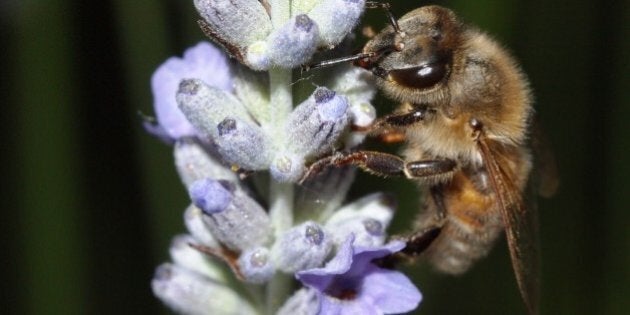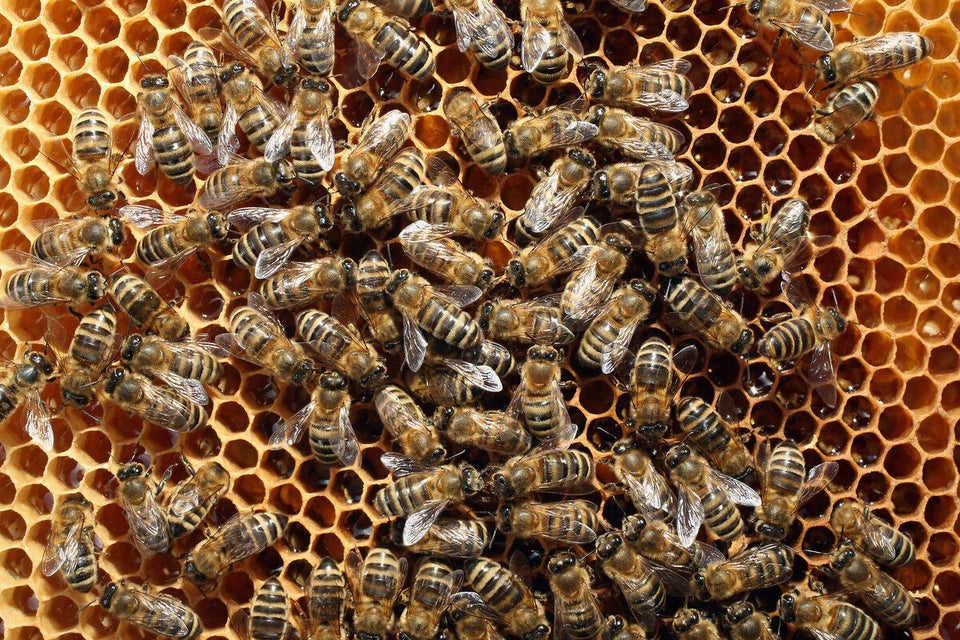
By Sheila Colla, Scott MacIvor and Jode Roberts
If you love bees, please read this.
While beekeepers, city councillors, American presidents and multinational breakfast cereal companies have become advocates for beloved honey bees, this is an important public service announcement on behalf of wild bees, the honey bees' lesser-known but vitally important bee cousins.
First, we don't want to seem ungrateful for the attention honey bees are receiving. It is wonderful that media outlets like the Toronto Star are really interested in bees (see here, here, here and here). And it is great that cities like Toronto aspire to be called a Bee City. Honey bees are now such a hot commodity that bee-loving campaigns are making headlines all the time.
That's why it's time for a quick lesson about the thousands of species of wild bees that have received less attention than the charismatic honey bee.
- Honey bees are not native to North America. Before Europeans arrived, there were no honey bees on the continent. Zilch. Today, all of the honey produced in Canada is from a single species of European honey bee that is managed by beekeepers.
- Bees aren't wasps, and are gentle. Bees are vegetarians and collect nectar and pollen from flowers. Wasps like yellow jackets are almost always the uninvited diners that you've swatted away and perhaps been stung by. This is because they have taken to human diets -- enjoying fruit, sugary drinks and meat. These black-and-yellow aggressors often give bees a bad name.
- Wild bee communities can be better pollinators than managed honey bees. While you may have heard that one-third of the food you eat was pollinated, honey bees are not the most effective pollinators. Studies have shown that wild bees can be two or three times better at pollination, and some, like mason bees, can be up to 80 times more effective. Cities are havens for wild bees and so their populations should be encouraged. It's surprisingly easy.
- Wild bees don't live in hives. More than 90 per cent of wild bee species have a "solitary" lifestyle rather than living in large, social colonies like honey bees where there is one queen and many workers. In solitary bees, every female finds and builds a nest and lays eggs on her own. Two-thirds of these are ground-nesters, including mining, digger, and sweat bees that make nests in soil and under leaves and rocks. The rest are cavity-nesters like mason, leafcutter, and carpenter bees that burrow in hollow stems, twigs, holes in wood and even between bricks.
- Toronto is a WILD bee city: Whether Toronto is formally designated a Bee City depends on a council vote this week. However, Toronto is home to several of the world's leading wild bee experts and has already established an impressive inventory of over 360 wild bee species that live in and around the city region.
You may be wondering why this all matters. It is important because wild bees and other pollinators are facing similar declines to honey bees. Threats range from pesticides and herbicides to loss of habitat to disease outbreaks and a dramatically changing climate.
To help bring back all bees, we need to continue creating vibrant gardens and naturalized green spaces with a variety of wildflowers that bloom from spring to fall. And because wild bees don't live in hives, we need to show them some love by making small changes to the way we manage our gardens and green spaces. For instance, you can create a wild bee sanctuary in your yard or garden by leaving a sunny patch of bare soil for ground-nesters. Add some pithy stems, sticks and decaying wood logs for cavity-nesters. And be sure not to disturb the nests over winter.
If your interest is piqued, you should check out the City of Toronto's forthcoming comprehensive guide to Toronto's bees, which is as beautifully presented as it is useful, and the David Suzuki Foundation's guide to pollinators.
Undoubtedly, the honey bee crisis has helped galvanize interest in bees and other pollinators. Now that the City of Toronto is considering becoming the country's first Bee City, let's get wild about the honey bees' hundreds of lesser-known wild bee cousins.
Sheila R. Colla is an Assistant Professor specializing in pollinator conservation at York University's Faculty of Environmental Studies. Scott MacIvor is a post-doctoral researcher in the Department of Biological Sciences at the University of Toronto Scarborough. Jode Roberts is an urban beekeeper and leads the David Suzuki Foundation's #gotmilkweed campaign and Homegrown National Park Project.
Follow HuffPost Canada Blogs on Facebook
ALSO ON HUFFPOST:
